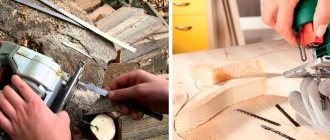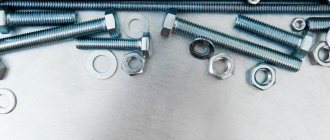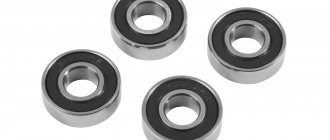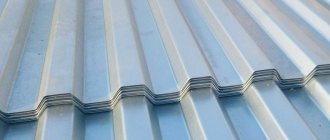From this article you will learn what working size of corrugated sheets C8, C10, C20 and C21 should be taken into account in order to correctly calculate the total width of the roof or fence.
In the previous article, we already discussed in detail why roofing material such as metal tiles has two widths: overall and working (useful). In a nutshell, the first size reflects the full width of the sheet from edge to edge. The second indicator indicates the size of that part of the material that will be visible to the eye when the sheets are laid on top of each other with an overlap of one wave. This overlay is necessary to prevent water from penetrating between the profiled sheets.
You already guessed that the rule for calculating the width of a metal tile roof is completely similar to calculating a slope or fence made of metal profiled sheets? Let's take a closer look.
Corrugated sheet covering
First, let's decide on the appearance of the material. The corrugated sheet can be simply galvanized without a polymer coating or with a polymer coating.
In both cases, the steel sheet is coated with a zinc compound that protects the material from corrosion. This is realized by the hot method, when the sheets are immersed in molten zinc, or by the electrolytic method, when zinc powder settles on the surface of the steel during the electrolysis process.
Needless to say, regular galvanizing without a polymer coating will be the cheapest option to use. Such a sheet is not suitable for the roof of a residential building, but using it on the roof of a garage, utility room or other auxiliary building is quite justified. The service life of such corrugated sheets is 10-12 years and manufacturers rarely give a guarantee for their rental for more than 2 years.
Corrugated sheeting with a polymer coating will last much longer on the roof. To do this, additional production steps will include priming on both sides of the profiled galvanized sheet and subsequent spraying of a polymer coating on one or both sides. The polymer coating, in turn, can be glossy (the most budget-friendly solution is polyester) or matte (more expensive coatings based on polyvinyl chloride).
Peculiarities
Roofing corrugated sheeting always meets more stringent requirements than the wall version of this material. But it is used in a variety of cases. It’s one thing when you need to cover the roof of a solid cottage, another when decorating a private house, and a third when work is being carried out on a temporary structure. You always need your own approach. In any case, corrugated roofing is superior to many other materials in such parameters as:
- protection against corrosion;
- ease of transportation and installation;
- light weight and versatility in use;
- environmental Safety;
- minimum care requirements.
But users will have to reckon with possible difficulties. Only when using reliable sound insulation can the “loudness” of a professional sheet be overcome
It must be transported with great care, because the material deforms very easily.
Marking of corrugated sheets
Regulatory documents and GOSTs oblige manufacturers to label their products. Depending on the marking, the profile can be:
- Stenov. In this case, it is marked with the letter “C”. This profile is proposed to be used on vertical surfaces, since the height of the profile is not high (from 8 mm to 44 mm), and the thickness starts from 0.35 mm and does not exceed 0.6 mm. However, the load-bearing capacity of wall corrugated sheeting allows its use to cover a roof with a large angle of inclination, provided that a reliable rafter system or even a continuous sheathing is installed.
- Bearing. For roofing, a corrugated sheet marked with the letter “H” is recommended. The height of the profile is significantly higher than that of a wall profile (up to 114 mm); accordingly, the stiffening ribs provide greater load-bearing capacity. This material is made of steel up to 0.9 mm thick, so it can withstand significant weight loads. The use of such corrugated sheeting is possible even on flat roofs.
- Universal. The characteristics of this profile allow it to be used for all types of construction work. Universal type corrugated sheets marked “NS” have average characteristics of profile height and sheet thickness. This profile is suitable for both fences and roofs with any slope.
It should be noted that this or that marking does not oblige the consumer to use corrugated sheets only in accordance with it. When choosing a material, many factors should be taken into account, for example, the purpose of the building, the angle of inclination and length of the slope, features of the rafter system, and so on. The lower the roof slope and the shorter the pitch of the sheathing, the higher the profile is required.
Calculation of materials for project implementation
Having learned all the parameters of the products, in particular the usable width, the question arises of how exactly to calculate the number of sheets required. You can carry out calculations in two ways:
- Along the length of the covered area. The length of the structure (fence) should be divided by the useful width parameter. Round the resulting value up, which will indicate the amount of material required.
- According to the area sheathed with corrugated sheets. A more complex calculation method, which is necessary in the process of roofing work and finishing the facades of buildings. It is important to take into account the fact that the overlap technology reduces the working width and length too. The value of the latter depends on the frame and the location of the beams from each other. We multiply the useful length by the working width to obtain the useful area covered by one sheet. We divide the entire area of construction work by the previously obtained parameter and obtain the amount of required material. If the value is not an integer, it should be rounded up.
With all this, it should be understood that the profiled sheet is selected individually for each case. So, for the construction of long fences, it should be noted that such building materials must be combined with strong posts and a frame. It is practical to use concrete or metal pillars as they do not deform under the influence of moisture and can easily withstand wind loads. It is better to avoid wooden supports, since their main drawback is the rapid rotting of the base. This inevitably leads to distortions of the fence and further destruction.
It is better to use metal corners or small wooden beams as a frame. This is due to the fact that it is much easier to attach corrugated sheets to them, and for this you only need to select the correct size of screws.
But in order to optimize costs, it is worth counting not only the number of profiled sheets, but also the posts, frame and fittings (fastening tools). To make the structure as stable as possible, the pillars should be placed as close to each other as possible. This will give the overall structure rigidity, even under storm wind loads.
Sheet thickness
What thickness of corrugated sheeting is best for the roof?
Manufacturers offer the consumer sheets from 0.37 to 1.2 mm. For the roof of a residential building, it is optimal to use thicknesses in the range from 0.45 to 0.55 mm. The thicker the material, the more expensive it will be and the final cost will be comparable to the price of metal tiles, for example, which, nevertheless, has superior characteristics, all other things being equal.
Methods for attaching lathing under profiled flooring
Roof options: single-pitch and gable.
The main component of the sheathing are beams that are laid at right angles to the slings.
Having chosen the desired step, the beams are secured with bolts, staples or, most often, nails. A properly designed sheathing will last your roof for a very long time.
Along the eaves there should be a board that is thicker than the main sheathing beams.
Additional strengthening is also required by roof features, for example, chimney, window, fire personnel, etc.
In this case, it is worth strengthening the perimeter of the exits with additional boards.
Fastening of the profiled flooring occurs only after the insulating sheet has been laid and the ventilation system has been installed.
The thickness should be calculated taking into account the height of the corrugated sheet and the length of the external fasteners that hold the profile. It is recommended to choose a distance between steps of no more than thirty centimeters
And with a decrease in the angle of inclination, that is, the less steep the roof, the pitch of the sheathing should decrease
It is recommended to choose a distance between steps of no more than thirty centimeters. And with a decrease in the angle of inclination, that is, the less steep the roof, the pitch of the sheathing should decrease.
It also takes into account how strong and thick the material is, how light the corrugated sheeting is and under what weather conditions it should hold up. It is worth installing wind boards at the ends of the roof
It is worth installing wind boards at the ends of the roof
They should rise above the frame enough to cover the corrugated sheeting.
The length of the step largely depends on the height of the roof, hail, snow and other precipitation, which place additional stress on the roof.
The longer the profile height has been chosen, the higher the roof load can be tolerated.
If the roof has a slope of no more than fifteen degrees, then type C20 corrugated sheeting is used (the use of continuous sheathing and laying of profiled sheets is done overlapping, in two waves).
When using sheets of type C35, the sheathing pitch is increased to thirty centimeters, and the sheets are laid in one wave. If with this type of installation you use a step of 55 - 65 centimeters, then you need to prepare for a decrease in the critical load.
Type C44 corrugated sheeting is installed at a sheathing pitch of sixty-five centimeters. With this step, you can also use the highest categories of profiled flooring.
The use of antiseptics and other substances that can protect the tree from pests and adverse conditions is desirable, but not necessary. They will help your roof last a very long time and not require additional repairs.
For the most convenient installation, you should use specialized screws. They have a drill at the end and a rubberized base under the cap. These screws are produced in all colors and patterns to suit your roof type.
Attach profiled sheets to self-tapping screws, nails or V-shaped fasteners. The use of nails is justified when cladding walls and constructing protection panels.
The profiled sheet is laid from the bottom rows to the top.
The sheets are attached to a wooden base in the recesses between the waves.
The edges of the bottom row of profiled sheets should protrude, creating a cornice, 15 - 20 centimeters from the walls of the building. This will protect the latter from damage and damage to the cladding.
The installation of sheathing under corrugated sheets requires the use of wooden beams or boards laid closely or spaced perpendicular to the rafters.
Advice. It is easier to treat the edges of the beams from splinters and chips on the ground, even before assembling the structure. Also, impregnation with an antiseptic is easier on a disassembled frame than on an assembled one.
Roofing profile
Which brand or type of corrugated sheeting is more suitable for the roof? The most popular are profiles with corrugation heights from 8 to 21 mm. The height of the wave (corrugation) is responsible for the load-bearing capacity, strength and reliability of the finished roof.
According to the standards, a profile marked C8 is considered a wall profile, however, such corrugated sheeting is often used on the roof of outbuildings, which is quite acceptable. But the angle of inclination of the slope should be 45 degrees or more, a continuous sheathing is highly desirable, and in places where ventilation or chimneys exit, additional sheathing is necessary. The thickness of the metal in this case should be no less than 0.45 mm, and even this does not guarantee that when moving on such a roof, if necessary, the metal will not be pressed through. It is better to increase the overlap of sheets during installation by two waves to avoid leaks during rain or when snow melts.
C20 corrugated sheeting is most often used on the roof. Its wave height is 18 or 20 mm (depending on the manufacturer), which increases the load-bearing capacity. The optimal thickness is selected 0.45 or 0.5 mm. Let us note once again that the strength of the roofing covering and the ability to withstand significant loads, be it snow or the weight of the person servicing the roof, depend on the thickness of the metal and the height of the profile. The thicker and higher the profile, the better.
Despite the fact that this corrugated sheeting is marked with the letter “C” and is intended for vertical surfaces, some manufacturers offer this profile with the mark “R”, which means roofing. And all because it differs from the usual C20 profile by the presence of a capillary groove. This special recess is a small groove pressed along the outer wave. During installation, it will be covered with a top sheet. The purpose of the capillary groove is to prevent moisture from entering the under-roof space.
Profile C21 is similar in appearance to C20, but has a corrugation height of 21 mm, the wave width is equal to the wave pitch and is 35 mm, which visually makes such corrugated sheeting more attractive.
Profile NS35 is the initial brand of full-fledged roofing corrugated sheeting. The 35 mm high trapezoidal waves make it particularly durable. If we look at the profile drawing, we will see semicircular grooves in each lower and upper wave; they play the role of additional stiffening ribs. In the edge zone of the corrugated sheet there is a capillary groove for draining the resulting condensate. Most often, NS35 is mounted on the roof of non-residential structures, garages or sheds.
The H60 profile is made from fairly high quality steel, the thickness of which is usually from 0.7 mm. The wave height of 60 mm and additional stiffening ribs make it so durable that the service life of such a roofing coating will be 50 years or more. There is also a groove along the working edge of the sheet to drain condensate. Such a high and durable profile, and as a result, more expensive, is advisable to use in regions with heavy snow and wind loads.
It is worth noting that despite the fact that high profiles NS35, H60 and so on have a significant margin of safety, their use on the roof of a private house is not economically profitable, since due to the significant wave height and the thicknesses of the steel sheet used, reinforced sheathing is necessary for such corrugated sheeting, which increases the cost of work, and the metal itself will cost much more than lower profiles. The roof of a house covered with H60 with a budget polyester coating is comparable in cost to a metal tile roof with an expensive, higher quality Quarzit or Velur coating. And such a roof will look much more aesthetically pleasing and attractive.
Roof insulation layers
The cost of manufacturing a roof from corrugated sheets depends on the total area of the roof, as well as the complexity of the project. Multi-layer roof insulation plays a vital role. Due to it, heat loss is reduced, noise levels are reduced and water is prevented from entering the interior of the building.
In this figure you can see the installation order of all materials:
- The bottom layer is a film. It does not allow moisture to penetrate the thermal insulation mats;
- Insulation layer. It is installed between the rafters;
- A waterproofing material is attached over the thermal insulation;
- A gap of 20-30 millimeters is left between the roofing material and the insulating film. It ensures free air circulation. As a result, condensation is prevented.
You can also install polystyrene boards. They don't absorb water. To fill all cavities, a special mixture consisting of liquid components is used. They are used to make a foam composition at the work site.
Galvanizing class
Another important point that you should pay attention to when purchasing any profiled products is the amount of zinc applied to the rolled product. The degree of susceptibility of the metal to corrosion depends on it. Unfortunately, the buyer will not be able to visually evaluate this parameter, however, a responsible manufacturer will definitely provide regulatory documents and certificates of conformity for the metal, which will indicate the galvanizing class. There are 3 classes, the zinc content of which is indicated below:
Metal with the second class of galvanizing is the most affordable and is more often offered to customers who purchase inexpensive corrugated roofing.
Metal with the first and higher (P) class is recommended for use in regions with increased atmospheric loads or at critical industrial facilities in our region.
Application area
Galvanized corrugated sheeting is a popular building element that is widely used in the construction of various objects. It is used:
- As an interfloor ceiling or load-bearing structure.
- For roofs of structures with high requirements for relative loads.
- When pouring a foundation in the form of a temporary structure.
- In the form of a permanent or temporary fence of a building.
If budget savings are your top priority during construction, you should choose a profiled sheet to solve your problems.
Corrugated sheeting with varnish or polymer coating is used:
- When installing kiosks or pavilions for trade.
- Installation of gas stations, industrial premises.
- During the construction of cottages, dachas, country houses.
- For cladding the exterior of a building.
- As interior decoration.
- For the construction of gates and fences.
- When performing roofing work in buildings with large spans.
Sheet dimensions
The width of each profile brand is standard, for example, C8 has a total width of 1200 mm, and profiled sheet C20 has a total width of 1150 mm. Any length of rolled metal is possible up to 12 meters. This is very practical if it is necessary to cover long slopes of 4 meters or more, since it allows you to avoid horizontal joints, which has a positive effect on the tightness of the roof. However, when the length of the slopes is 6...8 meters or more, it is not recommended to order corrugated sheets (especially with a low profile C20 or C21), since such a length will complicate the lifting of the metal onto the roof and there is a risk of deformation of the corrugation due to the large mass of the sheets. And transportation of long items will cost much more, since large-sized vehicles will be involved.











